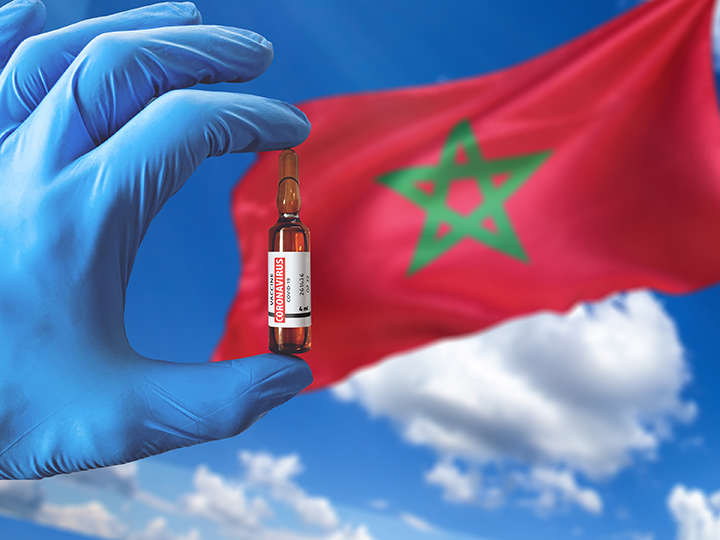
The South African Research Chairs Initiative (SARChI) Chair in Social Policy recently hosted an impactful webinar, presented by Sara Zouiri, on "Vulnerability to poverty and the distributional impact of the COVID-19 pandemic in Morocco". The research, conducted by Sara Zouiri, Zakaria El Faiz and Marouan Ikira, is part of a flagship multinational research project that chair launched in 2021 from the College of Graduate Studies.

Poverty and vulnerability reduction are urgent global concerns that have gained prominence in the wake of the recent health crisis. Indeed, the distributional effects of the crisis have proven to be very alarming, even for countries that have made significant progress in reducing poverty. The emphasis is on the section of the population just above the poverty line or that part of the population vulnerable to poverty.

Sara Zouiri, Research Collaborator, SARChI Chair in Social Policy, Mohammed V University, Rabat, Morocco
It is in this context that this research sheds light on the dynamics of poverty underpinned by two approaches: the monetary approach and the multidimensional approach. It also provides a detailed diagnosis for the case of Morocco. As a developing country, and despite several structural measures that have been undertaken to ensure economic development, poverty reduction and social exclusion, Morocco still faces structural challenges such as a large informal sector, structural labour market deficiencies and slow economic growth, which amplify the social challenges. Thus, in order to reduce social disparities and poverty rates, the country has implemented several social policies and programmes, in line with the Millennium Development Goals (MDGs) and the Sustainable Development Goals (SDGs).
According to their findings, the authors highlight several important features of poverty and vulnerability in Morocco. Using the national poverty line, the estimated income poverty rate appears to be relatively low at the national level, contrary to the rate of vulnerability to income poverty, which remains quite high. On the other hand, and despite the progress in basic social services that Morocco has achieved, a significant proportion of the population still suffers from multidimensional poverty. In addition, a significant proportion of the population is identified as vulnerable to multidimensional poverty. After disaggregating the latter, it can be observed that the dimensions of the education and living conditions contribute considerably to total vulnerability, where "Water" and "Housing" present the most significant deprivations. In addition, the large differences between rural and urban infrastructures induce high rates of multidimensional vulnerability among rural households compared to urban households.
As the Covid-19 crisis constitutes an unprecedented shock to the Moroccan economy, the authors analysed its impact on income poverty, vulnerability to income poverty and the transition that took place, following two key scenarios: a crisis scenario and a policy scenario. Simulation results show that the pandemic could have a profound effect on poverty and vulnerability that could last longer than expected.
In fact, while the income poverty rate could increase by 2.4 percentage points, the poverty gap and severity could also rise sharply. It is worth mentioning that all individuals who fell into poverty were vulnerable in the baseline scenario, accounting for one-third of the poor population following the crisis. Meanwhile, the number of vulnerable people in the crisis scenario is estimated to increase by about two million individuals. The policy scenario shows that the measures undertaken during this crisis could not alleviate the impact of the crisis in regard to both the macroeconomic and poverty indicators, but were beneficial to the non-poor, non-vulnerable population, where their transition into vulnerability was significantly reduced. In terms of the key characteristics of the newly poor population, the findings revealed that “area of residence”, “educational attainment” and “household size” were key determinants of transition to poverty.
It was also highlighted that, while poverty remains low at a national level, there are alarming signs of vulnerability. Despite progress in the basic social services that Morocco has managed to achieve, a significant proportion of the population is either struggling from multidimensional poverty or at risk of falling into poverty. The geographic distribution reveals high disparities, highlighting the regional idiosyncrasies in the country.
This research highlights the preponderance of vulnerable individuals in Morocco, exposing the population to a higher risk of poverty. This emphasises the role of proper targeting in preventing the expansion of poverty or, at least, the reduction of its intensity and severity in times of crisis. In line with these findings, the importance of analysing poverty dynamics also lies in understanding the future risk of poverty, in order to design not just poverty reduction policies, but also forward-looking anti-poverty strategies.
* By Hanli Wolhuter, Communication and Marketing Specialist & Musa Buthelezi, Intern, College of Graduate Studies
Publish date: 2022-12-13 00:00:00.0